Effects of ketamine on the unconditioned and conditioned locomotor activity of preadolescent and adolescent rats: impact of age, sex, and drug dose
- PMID: 28589265
- PMCID: PMC5709166
- DOI: 10.1007/s00213-017-4660-3
Effects of ketamine on the unconditioned and conditioned locomotor activity of preadolescent and adolescent rats: impact of age, sex, and drug dose
Abstract
Rationale: Ketamine is used by preadolescent and adolescent humans for licit and illicit purposes.
Objective: The goal of the present study was to determine the effects of acute and repeated ketamine treatment on the unconditioned behaviors and conditioned locomotor activity of preadolescent and adolescent rats.
Methods: To assess unconditioned behaviors, female and male rats were injected with ketamine (5-40 mg/kg), and distance traveled was measured on postnatal day (PD) 21-25 or PD 41-45. To assess conditioned activity, male and female rats were injected with saline or ketamine in either a novel test chamber or the home cage on PD 21-24 or PD 41-44. One day later, rats were injected with saline and conditioned activity was assessed.
Results: Ketamine produced a dose-dependent increase in the locomotor activity of preadolescent and adolescent rats. Preadolescent rats did not exhibit sex differences, but ketamine-induced locomotor activity was substantially stronger in adolescent females than males. Repeated ketamine treatment neither caused a day-dependent increase in locomotor activity nor produced conditioned activity in preadolescent or adolescent rats.
Conclusions: The activity-enhancing effects of ketamine are consistent with the actions of an indirect dopamine agonist, while the inability of ketamine to induce conditioned activity is unlike what is observed after repeated cocaine or amphetamine treatment. This dichotomy could be due to ketamine's ability to both enhance DA neurotransmission and antagonize N-methyl-D-aspartate (NMDA) receptors. Additional research will be necessary to parse out the relative contributions of DA and NMDA system functioning when assessing the behavioral effects of ketamine during early ontogeny.
Keywords: Adolescent rats; Cocaine; Conditioned activity; Ketamine; Locomotor activity; Preadolescent rats.
Conflict of interest statement
Conflict of interest:
All authors declare no conflict of interest.
Figures

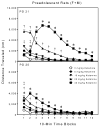

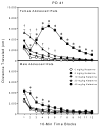
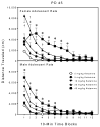
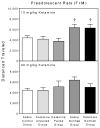
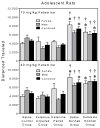
References
-
- aan het Rot M, Collins KA, Murrough JW, Perez AM, Reich DL, Charney DS, Mathew SJ. Safety and efficacy of repeated-dose intravenous ketamine for treatment-resistant depression. Biol Psychiatry. 2010;67:139–145. - PubMed
-
- Ahmed SH, Cador M, Le Moal M, Stinus L. Amphetamine-induced conditioned activity in rats: comparison with novelty-induced activity and role of the basolateral amygdala. Behav Neurosci. 1995;109:723–733. - PubMed
-
- Ahmed SH, Oberling P, Di Scala G, Sandner G. Amphetamine-induced conditioned activity does not result from a failure of rats to habituate to novelty. Psychopharmacology (Berl) 1996;123:325–332. - PubMed
-
- Andersen SL. Trajectories of brain development: point of vulnerability or window of opportunity. Neurosci Biobehav Rev. 2003;27:3–18. - PubMed
MeSH terms
Substances
Grants and funding
LinkOut - more resources
Full Text Sources
Other Literature Sources

